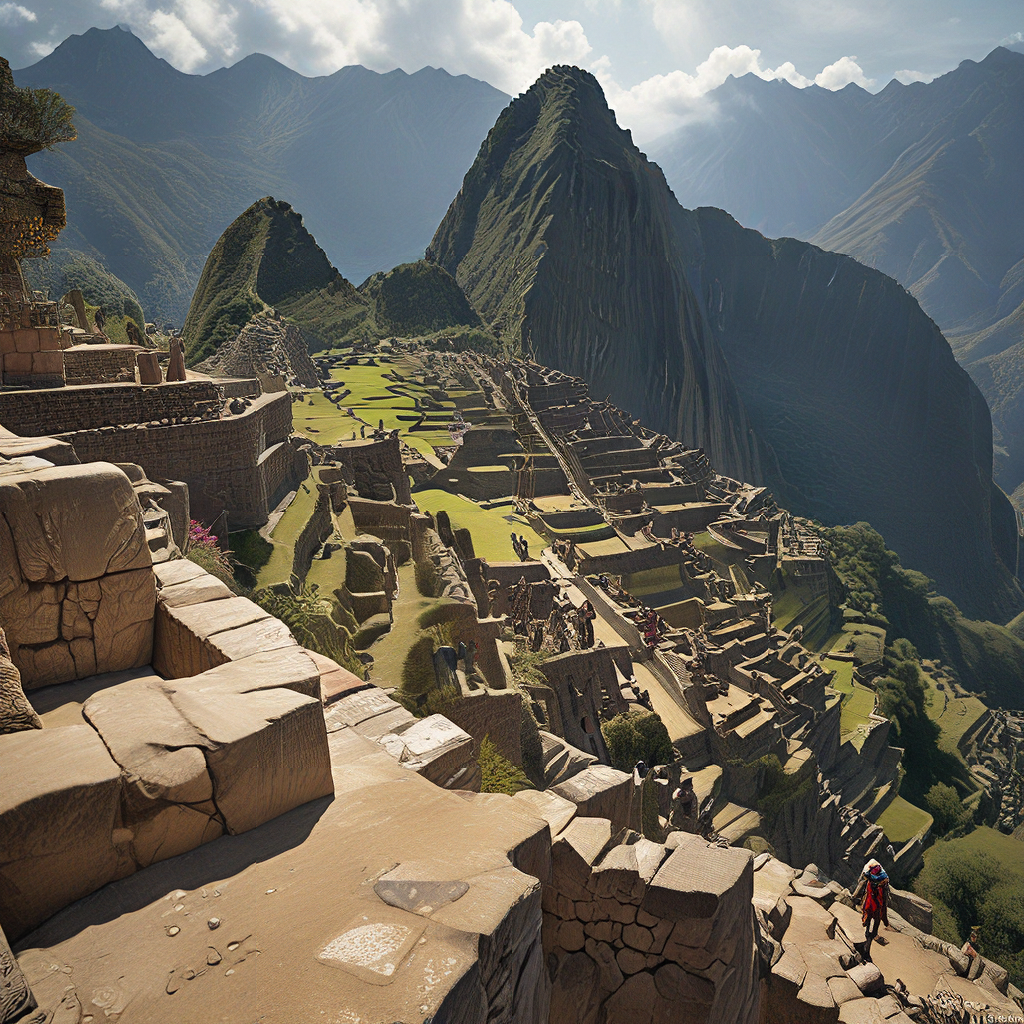The Underworld and the World Tree: Navigating the Depths Through the Tree’s Branches
I. Introduction
The concept of the Underworld has fascinated cultures across the globe, serving as a symbolic representation of death, the afterlife, and the unknown. In various mythologies, the Underworld is depicted as a realm that exists beneath the earth, housing the souls of the deceased, and often acting as a place of judgment and transformation.
In contrast, the World Tree stands as a central symbol in many traditions, representing life, growth, and interconnectedness. Trees have long been associated with the cosmos, connecting the earth to the heavens and the underworld through their roots and branches.
This article aims to explore the intricate connections between the Underworld and the World Tree, delving into their significance and how they inform our understanding of life, death, and transformation.
II. The Concept of the Underworld
Throughout history, the Underworld has been a prevalent theme in a variety of cultures, each offering unique interpretations and narratives. From the Greek Hades to the Egyptian Duat, the Underworld is often portrayed as a place where souls undergo judgment and may experience rebirth or punishment.
- Historical Perspectives: The Underworld varies dramatically from culture to culture:
- In Greek mythology, the Underworld is ruled by Hades and is divided into realms such as Elysium for the virtuous and Tartarus for the damned.
- In Norse mythology, Hel is the realm where many souls go, especially those who did not die gloriously in battle.
- In ancient Egypt, the soul must navigate the Duat, facing trials and the weighing of the heart against the feather of Ma’at.
Key themes associated with the Underworld include:
- Death: The finality of life and the transition to another state of existence.
- Rebirth: Many cultures believe in the cycle of life and death, where the soul may be reborn.
- Transformation: The Underworld often serves as a place of trial, leading to significant personal growth.
Notable representations of the Underworld can be found in literature and art, showcasing the profound impact of this concept on human culture. Works such as Dante’s “Inferno” and Homer’s “The Odyssey” explore the journey through the Underworld, offering insights into the human condition.
III. The Symbolism of the World Tree
The World Tree, known in different cultures as Yggdrasil, the Tree of Life, or other names, serves as a powerful symbol of interconnectedness and the cyclical nature of life. In Norse mythology, Yggdrasil connects the nine worlds, symbolizing the relationship between the earthly realm, the heavens, and the Underworld.
Key aspects of the World Tree include:
- Interconnectedness: The roots and branches of the World Tree connect various realms, emphasizing the unity of all existence.
- Branches as Paths: The branches represent different paths and choices in life, offering guidance and direction.
- Symbol of Growth: The World Tree signifies growth, life, and the continuous cycle of nature.
As a bridge between realms, the World Tree facilitates movement between Earth, Heaven, and the Underworld, embodying the interconnectedness of all life and the transformative journeys that occur within these realms.
IV. Interconnections Between the Underworld and the World Tree
One of the most compelling connections between the Underworld and the World Tree is the way the Underworld can be depicted as a root system within tree symbolism. Just as the roots draw nourishment from the earth, the Underworld provides the foundational experiences of death and transformation that nourish life.
The traversal from the Underworld to higher realms through the branches of the World Tree illustrates the journey of the soul. It signifies the potential for ascension and enlightenment following the trials of the Underworld.
The cyclical nature of life, death, and rebirth is elegantly illustrated by the World Tree. As leaves fall and new ones grow, the processes of decay and renewal reflect the constant cycle that governs existence.
V. Navigating the Depths of the Underworld
Many myths feature heroes who embark on journeys to the Underworld, facing trials and tribulations that test their character and resolve. These mythical journeys reveal valuable lessons about courage, resilience, and the importance of confronting one’s fears.
- Notable Heroes: Examples of heroes who ventured into the Underworld include:
- Orpheus, who sought to retrieve his beloved Eurydice.
- Inanna, who descended to the Underworld to confront her sister, Ereshkigal.
- Hercules, who completed the twelfth labor by capturing Cerberus.
The trials faced in the Underworld often lead to profound insights and personal growth. These journeys highlight the importance of guidance, which can be symbolized by the branches of the World Tree, offering wisdom and support during challenging times.
VI. The Role of Myths and Stories in Understanding These Concepts
Myths involving the Underworld and the World Tree serve as powerful narratives that shape our understanding of life and death. These stories often convey essential truths about human existence and the complexities of the human experience.
- Key Myths: Some notable myths include:
- The story of Persephone, which illustrates the seasonal cycle of death and rebirth.
- The tale of Gilgamesh, who seeks immortality and encounters the Underworld.
Storytelling profoundly impacts cultural perceptions of life and death, providing frameworks through which societies understand these concepts. In modern times, adaptations of these ancient ideas continue to resonate, influencing literature, film, and art.
VII. Contemporary Applications and Symbolism
In contemporary spirituality, the World Tree and the Underworld remain potent symbols. They are often explored in practices such as meditation, shamanism, and holistic healing, helping individuals navigate their own experiences of life, death, and transformation.
Art and literature inspired by these archetypes continue to flourish, reflecting humanity’s enduring fascination with these themes. Artists and writers draw upon the rich symbolism of the World Tree and the Underworld to explore personal growth, existential questions, and the interconnectedness of all life.
Psychologically, the insights derived from these symbols can aid in personal growth, offering pathways to understanding the self and the journey through life’s challenges.
VIII. Conclusion
The interrelation between the Underworld and the World Tree is profound and multifaceted. Together, they offer a rich tapestry of meaning that reflects the human experience of life, death, and transformation. By navigating these symbolic realms, we can gain insights into our own journeys and the cyclical nature of existence.
As we continue to explore these ancient ideas, we are invited to reflect on the lessons they impart and their relevance in our contemporary lives. The Underworld and the World Tree stand as timeless symbols, guiding us through the depths of our existence and illuminating the paths before us.
Further exploration of these themes can lead to a deeper understanding of ourselves and the world around us.



